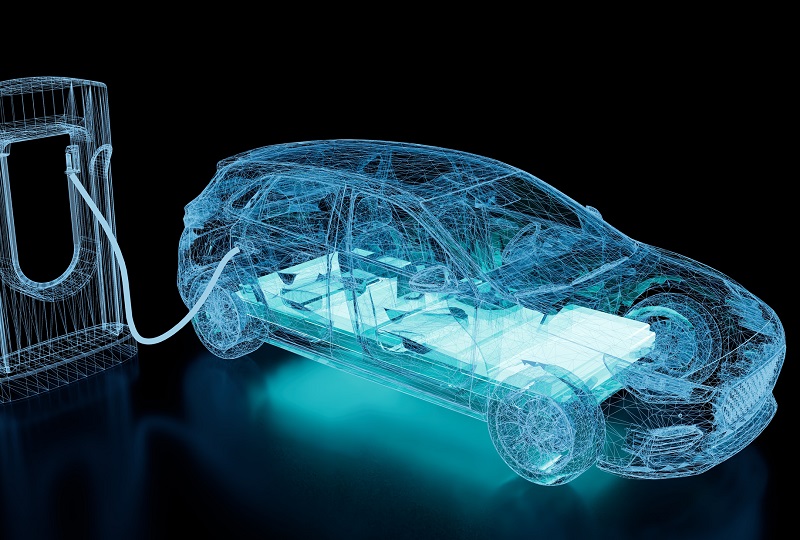Risks of EV battery repair

Canadian Collision repair shops and their insurance partners should be investing in training and education to safely repair defective or damaged electrical vehicle (EV) batteries over the next three to five years, attendees heard at Collision Repair magazine’s EV Repair Tour event held in Milton, Ont., Wednesday.
Canada’s federal government wants 100% of new vehicle sales to be zero emissions by 2035, the conference heard. One example showing EV is here to stay is that B.C. now has the second-highest number of EV claims in the world.
And so, collision repair shops and their partner insurers should be educating themselves now about the details of EV repair. To date, the collision repair industry is still in a state of infancy, noted David Giles of the EV Specialists Group.
But there are significant concerns about safety when repairing EV vehicles with high-voltage batteries and power trains.
“When [an EV vehicle customer] walks into a shop, and the shop [technicians] don’t even know how to turn the vehicle on, they don’t know how to drive it, and they don’t know how to handle the vehicle, that brings in the intimidation factor,” said Giles. “When you look at [EV] training courses, you see guys wearing arc flash protection — they’re wearing the gloves, a smock, boots and pads around the cars.
“And when you ask them, ‘What are you doing?’ They reply: “I’m doing a tire rotation. It’s an electric vehicle, so we have to be safe.”
Training should identify common repair services performed on EV vehicles to help technicians feel more confident about which are dangerous and which are not, Giles recommended.
For example, the use of personal protective equipment (PPE) would be required for doing high-voltage servicing of the battery or AC compressor, but not for basic services like detailing or tire maintenance, which would not require touching any high-voltage car parts.
Related: Why claims frequency is trending for electric vehicles
Still, safety is important when repairing EV batteries, said Joseph Chung of Call 2 Recycle.
“We had the opportunity of spending time with 300 firefighters who were [talking about] how they assess and deal with collisions with damaged EVs on the road,” Chung said. “The interesting thing about EV batteries is that, just by eyeballing it, oftentimes you can’t tell if it’s damaged or defective. And it gets really tricky.
“You have to look at if there’s any gas escaping. Is there a crack or a dent in it? Are there any punctures? Is there any water damage?
“There was a incident, I want to say a month and a half or so ago, down in New Jersey, where one defective battery went unnoticed. There were five different buildings in that area, and they started lighting it up like dominoes. And the entire facility went up in flames. And it’s probably close to a $1-million cost just clearing it out, let alone repairing and rebuilding that facility.”
If shops can’t tell an EV battery is defective or damaged just by looking at it, Chung recommended it would be best to leave that vehicle parked outside the shop, away from other cars or buildings.
Giles said the long life of EV batteries makes it more likely the car owner would prefer to replace a damaged battery with a recycled one in the event of a damage claim.
“The cycle time of the [EV] batteries is incredible — 2,000,” said Giles. “Cycle time means this battery can be fully charged and discharged over 2,000 times if that vehicle gets to a range of 400 kilometers….Even if the car only gets 60% of a usable charge, you’re still over 650,000 kilometers, which means the car is probably going to wear out before the battery….
“The batteries will never wind up in a landfill. They are very recyclable. EV owners would rather have recycled parts put on their vehicle after collision damage than having new parts put on in some cases. That’s the recycling and environmental culture they’re coming from.”
When batteries can’t be fixed, they can be hauled away, but they are treated like hazardous waste, said Chung, whose company hauls away EV batteries as part of its service. Some valuable materials in the battery can be extracted so they can used in the creation of new batteries.
Thus far, regulations around repairing EV batteries safely are in place in B.C., Saskatchewan, Manitoba, Ontario, Quebec and P.E.I, whereas Nova Scotia is tracking to launch their regulations in July 2024. Alberta and New Brunswick will also be coming on board.
The conference heard that all Canadian provinces and territories should have regulations in place by 2026.
Feature image courtesy of iStock.com/Just_Super







